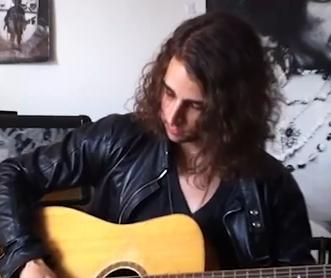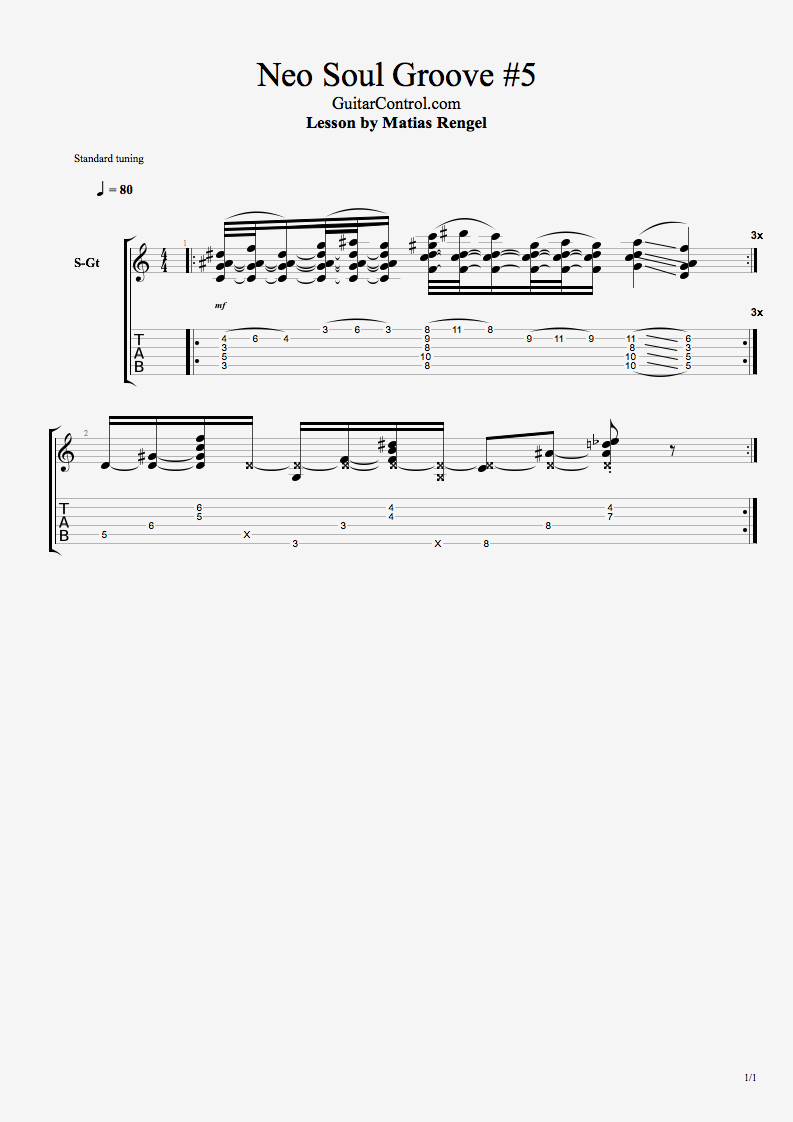Learn to play three fun and easy beginner riffs from the 1960s with Guitar Control instructor Darrin Goodman, aka Uncle D. Be sure to get the free tabs to go along with the video instruction and you will be rockin’ these classic riffs in record time.

Introduction
How’s it going everybody? This is Darrin with GuitarControl.com bringing you this video lesson and today I’ve got three fun and easy beginner riffs from the 1960s.
Right now Guitar Control is giving away this really cool free chord chart, there’s a link down in the description where you can download yours. It’s in PDF format and it just has every chord you could ever need all neatly compiled just into one sheet. So you can download it, print it off, put a copy where your practice, throw a copy in your gig bag; just so in any situation you can have any chord you need at a glance and it’s a free download.
So be sure to click on the link in the description for the tabs and let’s get close up and take a look at these.
1960s Riff-1 – Brown Eyed Girl
All right so the first we’re going to look at is a little riff little melody from Brown Eyed Girl by Van Morrison. So this is just made up primarily of these little dyad shapes; so if you’ve seen any of the previous lessons I’ve done on those. So we’re on the seventh fret of the high E string with your first finger and then we’re on the eighth fret of the B string with your second finger. And then how I play this is I use my fingers so I can play these two strings at the same time. So I’ve just got my first finger playing the B string and my second finger playing uh the high E string and this little dyad shape is the one that was for a major third… Then we’re going to move the note that’s on the high E string up a half step so it’s going to go from the seventh fret to the eighth fret, but the note on the B string is going to move up a whole step. So now it’s on the 10th fret, so this shape here would be like is a minor third… so we play this as one and, and then on the downbeat of two we rest and on the and of two we just take this shape and we move it up a whole step so now your first finger is on the 10th fret of the high E string and your third finger is on the 12th fret of the B string and we’re going to hit that on the and of two and then on the downbeat of three we rest and then on the and of three we move it back down… And then for beat four we come back to eight and seven and this one’s a quarter note; so the first measure… Now for the second measure we’re going to do the same exact shape but we’re just going to move it up so now we’re first fingers on the 12th fret of the high E and your second finger is on the 13th fret of the B string so we’re gonna do that same thing, the major/minor. So now we’re at the 13th fret on the high E string and the 15th fret on the B string and then 15th fret on the high e 17th on the B string and then back down. So the timing’s the same and now we do that first, so the third measure is the same as the first measure… so after we do that and then starting on the fourth measure we’re going to take our first finger we’re going to move it down so it’s on the fifth fret of the high E string and then you can use your third finger to pick up the seventh fret of the G string and then you’re going to play those together and then you’re gonna go to the seventh fret on the B string. So I just use my pinky and then the eighth fret, my pinky and then finally ending on the fifth fret of the high E string… and then it would just repeat.
1960s Riff-2 – Born To Be Wild
All right so the next we’re going to look at is the main riff from Born To Be Wild by Steppenwolf. So this one’s pretty easy, we’ve just got a regular E major chord here rooted on the A string; so my first finger is picking up the seventh fret of the A string and then I’m just using my third finger to pick up the ninth fret of the D, G and B string. Now if you are a beginner and you are having problems getting that note on the B string it’s not really super important. That’s the third and without it’s just an E5, but it still sounds good. So this first strum is a quarter note one and then on the downbeat of two we rest and then on the and of two we hit this again and then on beat three we hit it again… then we rest on the downbeat of four and on the and of four we hit it again. Then on the second measure the downbeat of one we rest and on the and of one we hit it one more time and then we rest on the downbeat of two and the and of two hit it again. Then this is where we get the probably the most challenging part of it. The only real change is that we’ve got this, you know we’re playing this E5 here, so we’re on the seventh fret of the A string and the ninth fret of the D and the G string we’re going to do this and then we’re going to reach up to the 11th fret on the D string and this is on the downbeat of three; so we’re going to pick this and pull-off our pinky and that’s three and then we’re going to reach up to the 12th fret do the same thing… Now if you’re beginner and this is really tough to make this stretch you could do it this way… so that way it’s a little bit easier to make that change…
1960s Riff-3 – I Can’t Get No Satisfaction
All right then the last one we’ll look at is the riff room I Can’t Get No Satisfaction by the Rolling Stones. This one is incredibly simple so if you’re not a beginner this one you know is probably going to be pretty boring for you, but everybody’s got to start somewhere right. All right so this one is just made up of single notes so we’re starting here on the second fret of the A string and we’re gonna play this as a quarter note and then beat two is tied to the downbeat of three; so we’ve got one two three and. And then for the downbeat of four we’re going to come up to the fourth fret; four and on the and of four do a hammer-on to the fifth fret… Now when we hit this on the and of four it is tied to the downbeat of, well it’s actually tied to beat one and it’s a dotted quarter note so this rings out for four and one two and. So on the end of two we hit that again and then on the downbeat of three we hit it and slide down to the fourth fret three and four and on the and or excuse me on the fourth fret and then the whole thing just starts over again…
Conclusion
All right, so there you have it, three fun and easy riffs from the 1960s for all the beginners out there. So if you like this lesson be sure to give me a thumbs up and leave a comment down below if you have any questions about this or other guitar related topics. If you’ve not already done so please subscribe to the channel and hit that notification bell so you don’t miss any of the content that we upload throughout the week. Well that is all I have for you today. Thanks for watching and have a great day.




